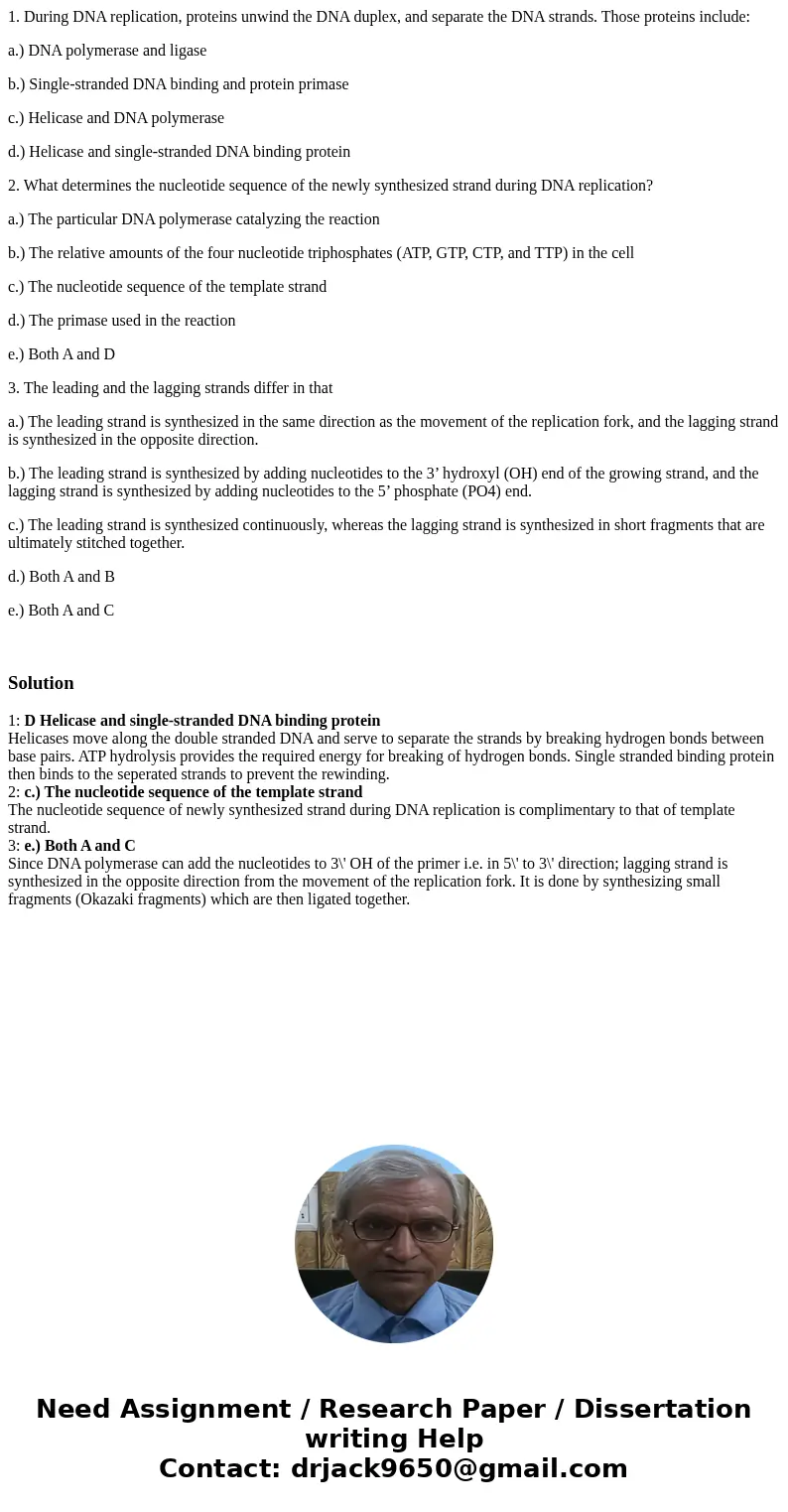1 During DNA replication proteins unwind the DNA duplex and
1. During DNA replication, proteins unwind the DNA duplex, and separate the DNA strands. Those proteins include:
a.) DNA polymerase and ligase
b.) Single-stranded DNA binding and protein primase
c.) Helicase and DNA polymerase
d.) Helicase and single-stranded DNA binding protein
2. What determines the nucleotide sequence of the newly synthesized strand during DNA replication?
a.) The particular DNA polymerase catalyzing the reaction
b.) The relative amounts of the four nucleotide triphosphates (ATP, GTP, CTP, and TTP) in the cell
c.) The nucleotide sequence of the template strand
d.) The primase used in the reaction
e.) Both A and D
3. The leading and the lagging strands differ in that
a.) The leading strand is synthesized in the same direction as the movement of the replication fork, and the lagging strand is synthesized in the opposite direction.
b.) The leading strand is synthesized by adding nucleotides to the 3’ hydroxyl (OH) end of the growing strand, and the lagging strand is synthesized by adding nucleotides to the 5’ phosphate (PO4) end.
c.) The leading strand is synthesized continuously, whereas the lagging strand is synthesized in short fragments that are ultimately stitched together.
d.) Both A and B
e.) Both A and C
Solution
1: D Helicase and single-stranded DNA binding protein
Helicases move along the double stranded DNA and serve to separate the strands by breaking hydrogen bonds between base pairs. ATP hydrolysis provides the required energy for breaking of hydrogen bonds. Single stranded binding protein then binds to the seperated strands to prevent the rewinding.
2: c.) The nucleotide sequence of the template strand
The nucleotide sequence of newly synthesized strand during DNA replication is complimentary to that of template strand.
3: e.) Both A and C
Since DNA polymerase can add the nucleotides to 3\' OH of the primer i.e. in 5\' to 3\' direction; lagging strand is synthesized in the opposite direction from the movement of the replication fork. It is done by synthesizing small fragments (Okazaki fragments) which are then ligated together.

 Homework Sourse
Homework Sourse